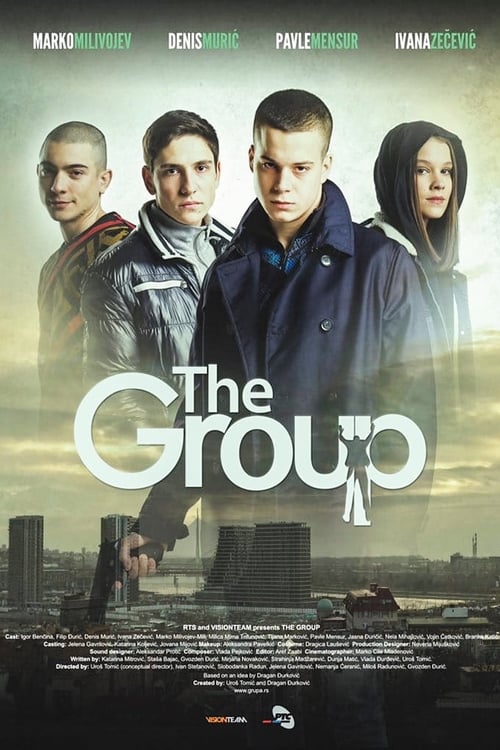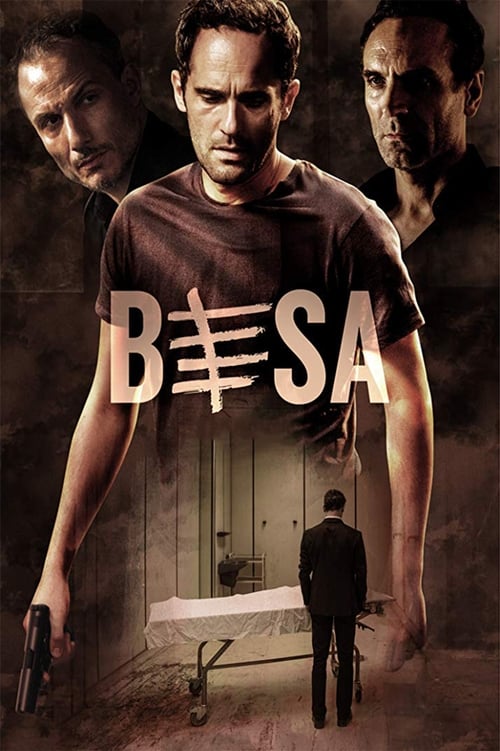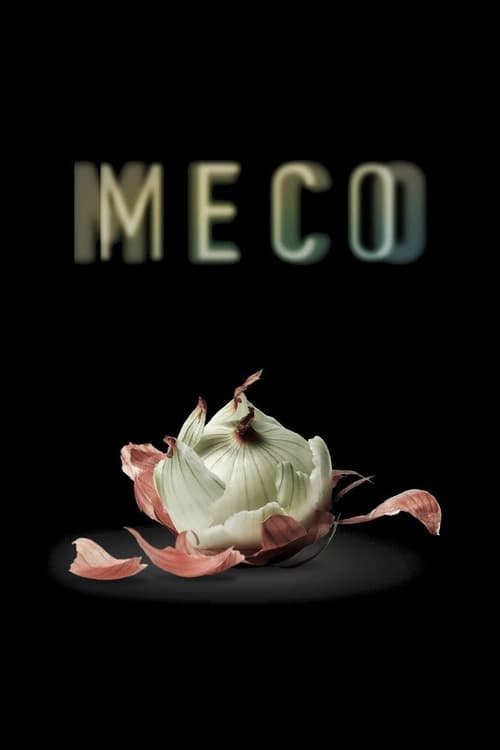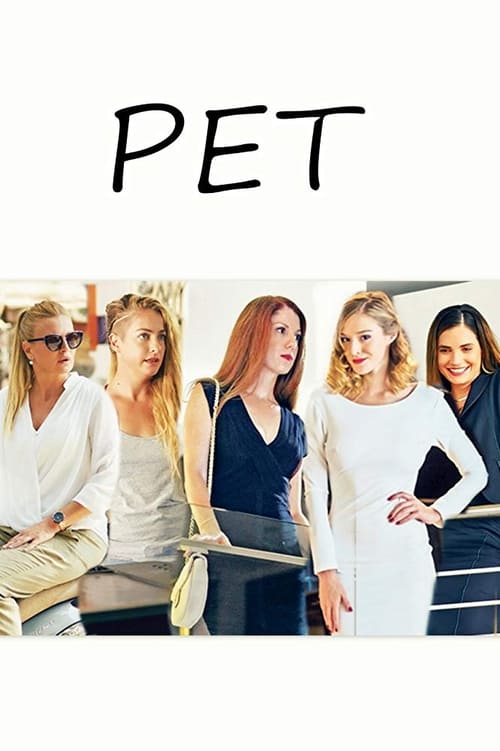
Ask Your Own Question
What is the plot?
In the opening scene of "The Group," we are introduced to a diverse group of friends who gather at a local café in their small town. The atmosphere is lively, filled with laughter and chatter as they discuss their lives, dreams, and the challenges they face. Among them are Sarah, a passionate artist struggling with self-doubt; Mark, a charismatic but troubled musician; Lisa, a pragmatic lawyer; and David, a free-spirited traveler. The camaraderie is palpable, but underlying tensions begin to surface as Sarah reveals her recent struggles with her art, prompting a supportive yet concerned response from her friends.
As the group continues to meet regularly, we see their individual lives unfold. Sarah's artistic block deepens, leading her to withdraw from the group. Mark, dealing with his own issues, begins to spiral into a cycle of substance abuse, which worries Lisa, who tries to intervene. David, meanwhile, is preparing for a trip abroad, feeling the pressure of leaving his friends behind. The emotional stakes rise as the group grapples with their personal demons while trying to maintain their bond.
A pivotal moment occurs when Mark's behavior escalates during a group outing. He becomes erratic and confrontational, leading to a heated argument with Sarah, who calls him out on his substance use. This confrontation serves as a wake-up call for Mark, who storms off, leaving the group in shock. The fallout from this incident creates a rift among the friends, with Lisa feeling torn between supporting Mark and holding him accountable.
In the following episodes, the group attempts to reconcile their differences. They organize a weekend retreat to reconnect and address their issues. During this retreat, they engage in deep conversations around a campfire, sharing their fears and aspirations. Sarah opens up about her struggles with self-worth, while Mark admits his fear of failure. This vulnerability brings them closer, but unresolved tensions linger, particularly regarding Mark's addiction.
As the season progresses, the group faces external challenges that test their unity. A local art competition becomes a focal point for Sarah, who sees it as an opportunity to reclaim her confidence. However, when she learns that Mark plans to perform at the same event, she feels threatened and questions whether she can compete. This leads to a confrontation where Sarah accuses Mark of overshadowing her moment, igniting a fierce argument that threatens to tear the group apart once more.
In a dramatic twist, Mark's addiction takes a serious turn when he goes missing after a night of heavy drinking. The group is thrown into chaos as they search for him, fearing the worst. This crisis forces them to confront their feelings about Mark and their own roles in his struggles. They band together, reaching out to mutual friends and family, showcasing their commitment to finding him.
After a tense search, Mark is found in a vulnerable state, prompting a heartfelt intervention from the group. They express their love and concern, urging him to seek help. This moment is pivotal for Mark, who realizes the depth of his friends' support and the impact of his actions on their lives. He agrees to enter rehab, marking a significant turning point in his journey.
The season culminates in a powerful finale where the group comes together for a gallery showing of Sarah's artwork, which she has poured her heart into during Mark's absence. The event is a celebration of her growth and resilience, and Mark, now in recovery, attends to support her. The emotional reunion is filled with tears and laughter, symbolizing their renewed commitment to one another. As the season closes, the group stands united, ready to face whatever challenges lie ahead, having learned the importance of vulnerability, support, and friendship.
What is the ending?
In the ending of "The Group," season 1, the characters face the culmination of their personal struggles and relationships. The season concludes with a dramatic confrontation that forces each character to confront their truths, leading to significant changes in their lives. The group ultimately disbands, but not without leaving a lasting impact on each member.
As the final episode unfolds, the tension among the group members reaches a boiling point. The scene opens in a dimly lit room where the group has gathered for what they believe will be a routine meeting. The atmosphere is thick with unspoken words and unresolved conflicts. Each character's internal struggles are palpable; they are all at a crossroads, grappling with their identities and the choices they have made.
The first major moment occurs when Sarah, feeling overwhelmed by the weight of her secrets, stands up and reveals her hidden struggles with anxiety and self-doubt. Her vulnerability resonates with the others, prompting a wave of confessions. This scene is charged with emotion, as the camera captures the raw expressions of fear and relief on their faces. The group begins to share their own burdens, creating a cathartic moment that brings them closer together.
Next, we see Mark, who has been wrestling with his feelings for Sarah. He finally admits his love for her, but the revelation is met with mixed reactions. Sarah, caught off guard, struggles to respond, leading to a moment of tension that hangs in the air. The camera zooms in on her conflicted expression, highlighting her internal battle between friendship and romantic feelings.
As the meeting progresses, tensions flare when Lisa, who has been harboring resentment towards the group for not supporting her during a personal crisis, lashes out. Her anger serves as a catalyst for the group to confront their dynamics. The scene is intense, with raised voices and emotional outbursts, showcasing the fragility of their relationships. The lighting shifts to a harsher tone, emphasizing the conflict.
In the climax of the episode, the group decides to take a break from their meetings, realizing that they need time apart to reflect on their individual journeys. This decision is bittersweet, as they acknowledge the bond they have formed but also recognize the necessity of personal growth. The camera captures their faces, a mix of sadness and understanding, as they say their goodbyes.
The final scenes depict each character's fate. Sarah takes a step towards therapy, determined to work on her anxiety. Mark, heartbroken but hopeful, decides to focus on his art, channeling his emotions into his work. Lisa, after her outburst, seeks reconciliation with her family, understanding the importance of support. The group members part ways, each embarking on their own paths, but the impact of their shared experiences lingers.
The season closes with a montage of each character in their new environments, symbolizing growth and change. The music swells, and the screen fades to black, leaving viewers with a sense of both closure and the promise of new beginnings.
Is there a post-credit scene?
In the show "The Group," season 1, there is indeed a post-credit scene that adds an intriguing layer to the narrative.
As the credits roll, the screen fades to black before transitioning to a dimly lit café, where the main characters are gathered around a table, their expressions a mix of exhaustion and relief after the tumultuous events of the season. The atmosphere is heavy with unspoken words, and the clinking of coffee cups punctuates the silence.
Suddenly, the camera zooms in on Sarah, who has been the emotional anchor of the group throughout the season. She looks contemplative, her brow furrowed as she stares into her cup. The others, noticing her distant demeanor, exchange concerned glances.
In a moment of vulnerability, Sarah finally speaks up, her voice barely above a whisper. "What if we're not done yet?" The weight of her words hangs in the air, and the group falls silent, each member processing the implications of her statement.
The scene shifts to a close-up of Jake, who has been grappling with his own demons throughout the season. His eyes widen, reflecting a mix of fear and determination. "We can't go back to how things were," he replies, his tone firm yet laced with uncertainty.
As the camera pans out, the group begins to discuss their next steps, hinting at unresolved conflicts and new challenges on the horizon. The scene ends with a lingering shot of the café's door, which swings open, revealing a shadowy figure standing outside, suggesting that their journey is far from over.
This post-credit scene effectively sets the stage for potential future conflicts and character development, leaving viewers with a sense of anticipation and curiosity about what lies ahead for the group.
What role does the setting play in the development of the story?
The setting of The Group, primarily centered around a community center, serves as a microcosm for the characters' lives. The vibrant yet chaotic environment reflects their emotional states, with scenes of laughter and camaraderie juxtaposed against moments of tension and conflict. The physical space becomes a character in itself, influencing interactions and symbolizing the characters' struggles for connection and acceptance.
What are the main conflicts faced by the characters in The Group?
The characters in The Group face various personal and interpersonal conflicts that drive the narrative. For instance, Sarah struggles with her identity and the pressure of societal expectations, while Mark grapples with his past mistakes that haunt his present relationships. Tensions arise within the group as secrets are revealed, leading to betrayals and confrontations that test their bonds.
How does the character of Emily evolve throughout Season 1?
Emily begins as a timid and uncertain member of the group, often overshadowed by stronger personalities. As the season progresses, she confronts her fears and begins to assert herself, particularly during pivotal moments when her insights help resolve conflicts. Her journey is marked by moments of self-discovery, culminating in a powerful scene where she stands up for herself against a dominant group member.
What secrets do the characters hide from each other, and how do these secrets impact their relationships?
Throughout Season 1, several characters harbor deep secrets that create rifts within the group. For example, Jake hides his financial troubles, which leads to feelings of shame and isolation. When these secrets are eventually revealed, they cause significant turmoil, forcing characters to confront their vulnerabilities and leading to both reconciliation and further division among the group.
How does the character of Lisa serve as a catalyst for change within the group?
Lisa enters the group with a bold and unapologetic attitude, challenging the status quo. Her willingness to speak her mind and confront uncomfortable truths forces other characters to reflect on their own behaviors and motivations. As she pushes boundaries, Lisa becomes a catalyst for change, inspiring others to confront their issues and ultimately leading to pivotal moments of growth and transformation within the group.
Is this family friendly?
"The Group," season 1, produced in 2019, contains several themes and scenes that may not be suitable for children or sensitive viewers. Here are some potentially objectionable aspects:
-
Mature Themes: The show explores complex adult relationships, including romantic entanglements and conflicts that may be difficult for younger audiences to understand.
-
Emotional Turmoil: Characters experience significant emotional distress, including anxiety, depression, and interpersonal conflicts, which may be upsetting for sensitive viewers.
-
Conflict and Tension: There are scenes of intense arguments and confrontations among characters that could be distressing, particularly for younger viewers.
-
Substance Use: Some characters engage in drinking or other substance use, which may not be appropriate for children.
-
Dramatic Situations: The show includes scenarios that involve betrayal, heartbreak, and personal loss, which could be heavy for younger audiences.
-
Mild Language: There may be instances of strong language that could be considered inappropriate for children.
These elements contribute to a narrative that is more suited for mature audiences, focusing on the complexities of adult life and relationships.






















